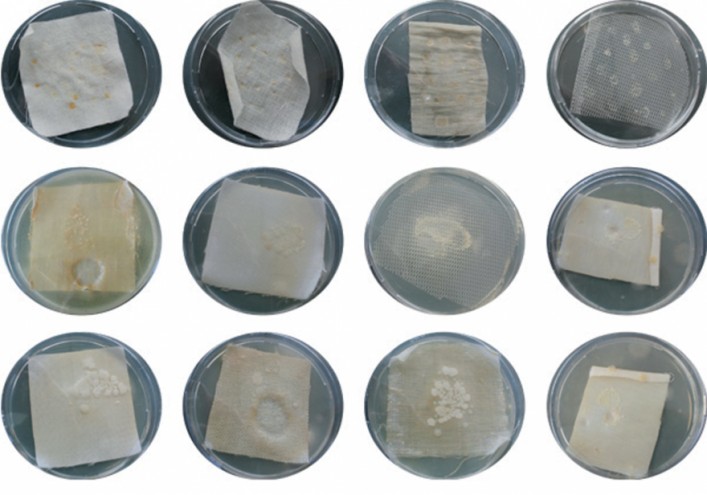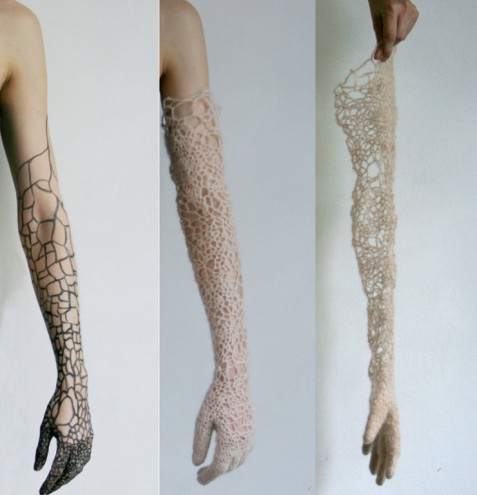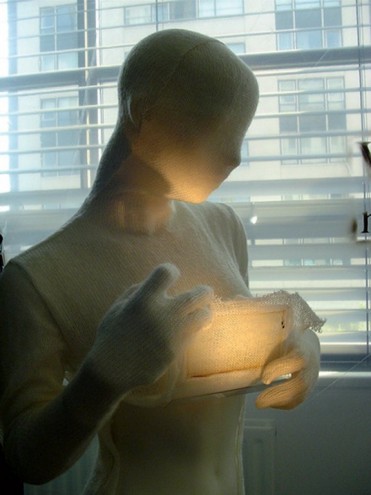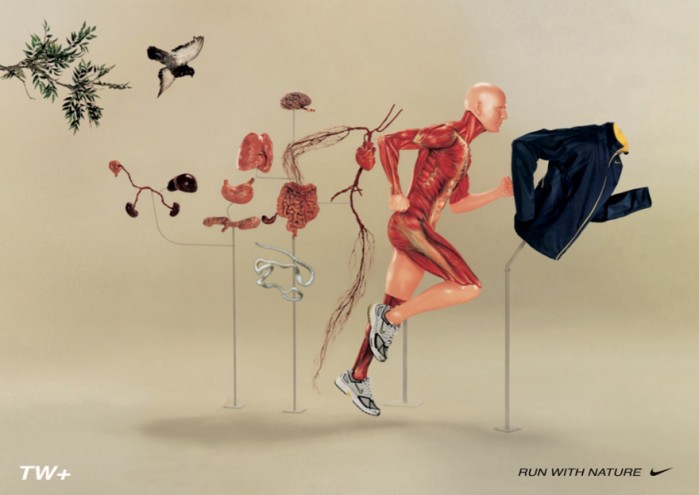First Published in
“Nature has all along yielded her flesh to humans. First, we took nature’s materials as food, fibres and shelter. Then we learned to extract raw materials from her biosphere to create our own new synthetic materials. Now bios is yielding us her mind – we are taking her logic,” wrote Kevin Kelly in his 1994 book, Out of Control, subtitled “The New Biology of Machines, Social Systems and the Economic World”.
Kelly’s book focuses mostly on how manmade systems, technology and intelligence are increasingly emulating biological or natural organisms. However, some years since the book was first published, the field of synthetic biology is taking more than logic from nature with scientists and engineers taking nature’s very constituent ideas to design living machines from scratch.
Synthetic biology promises a shift from biology as science towards “biology as technology”. If biology has up until now been descriptive – the investigation and unravelling of complex living systems – then synthetic biology proposes the construction of a design framework for a prescriptive biology. Such a toolkit, if actually possible, will allow us to build biological machines for human needs more easily, rejecting the bespoke tinkering of “traditional” genetic engineering.
As a designer exploring “synbio” for the past two years, I have increasingly come to understand it in terms of design and the production of useful things – as its leading scientist proponents do – instead of as pure science. Dr Drew Endy of Stanford University, for instance, describes himself as a designer, while Dr J Craig Venter spoke at Design Indaba 2010 about the minimal systems his lab is designing. Yet both Endy and Venter are bioengineers, firmly entrenched at the scale of genes and molecular biology, not the human-scale, tangible artefacts we typically associate with design. How can we understand living things as design and why might we?
In the post-industrial, post-modern landscape, there are no objective answers to the questions of contemporary design’s function and purpose. In the world of palpable design, modernism is dead. Modernism, that definitive 20th-century celebration of technological elegance, where function defined form, less was more and decoration was accused of hiding truth, does not service our complex world.
But perhaps that is only a question of medium. What if the sure ideologies of industrial modernism are being brought back to life? Not so much resurrected, but this time reengineered from fragments of nature’s constituents, streamlined and synthesised. We’re not talking the concrete and steel of Le Corbusier’s Machines for Living. Now the construction materials are strings of biological molecules, choice sections of genes and sequences of base pairs that encode the DNA proteins that are the building blocks of life.
Venter presents a strong argument for this new approach, which he brands as “Synthetic Genomics” (also his company’s name). Faced with a fuel-hungry, polluted, starving, over-populated world at risk of disease, synthetic biology is a potential saviour technology. Microbes could pump out diesel or anti-malarial drugs, tumour-killing bacteria could self-destruct after delivering their pay-load, and plants could grow sustainable chemicals and materials. All these “machines” will be designed and programmed at the DNA level. Reduced to a minimal design, engineered to be predictable and reliable, and built from standardised, interchangeable DNA components. They remain biodegradable yet “artificial” – the chassis, machinery and programming materials are products of nature, made by man. These living machines are the rational, engineered Machines for Living we were promised by modernism.
Endy also talks of decoupling the design of biological machines from their construction, much as an architect would design a building while the engineers and builders “bring it to life”. We’re still far off.
Much of what is described here remains fiction, the design of a field to enable its construction. But if we manage, what will this modernist biology look like? Who is designing this intentional version of nature and the kit of standardised parts and processes it is assembled from? How do we make such monumental design decisions, equal to those made by modernist architects who reshaped cities and the way we live?
Modernity embraced rationality and rationalisation, creating order from chaos. Now multi-disciplinary teams of scientists are working towards this same goal. Engineers, biologists, chemists, physicists, computer scientists and others are applying techniques more typical of design and engineering – modelling, design, prototyping, iteration, testing, standardisation and modularity – to biology. Within this, a new design discipline is being born.
BioBricks™, devised by Tom Knight at the Massachusetts Institute of Technology, is one of the first breakthroughs. Open-source standardised parts made from DNA sequences, BioBricks™ are similar to interchangeable electronic components or Lego bricks. The Registry of Standard Biological Parts is located in a large grey freezer in Knight’s lab. Catalogued online, a selection of parts is shipped each year to teams entering iGEM, the three-day International Genetically Engineered Machines undergraduate competition held at MIT. Five teams in 2004 grew to 120 in 2009, each spending the summer designing biological machines, using old parts and designing new ones based on sequences found in nature.
Novel parts and devices are submitted to the Registry, but before you can design them, you must decide what to design. For instance, in 2009 Cambridge University’s student team designed a biosensor system called E.chromi. If assembled, these engineered E.coli secrete a range of colours visible to the naked eye when triggered by different quantities of pollutant molecules. Without any synthetic biology experience, after a two-week crash course and 10 weeks of lab work, the students went on to win the Grand Trophy. iGEM is helping to spread synbio at the most accessible level.
A second important innovation is metabolic pathway engineering, which enables the design of more complex systems such as Jay Keasling’s Artemisinin system. Crafted using 150 person-years of work, E.coli pump out the precursor molecule to the anti-malarial drug Artemisinin. Tweak a pathway and the bacteria start secreting fuel. Though not built from off-the-shelf synbio parts like BioBricks™, we’re promised that one day, we’ll have enough well-understood components to design complex systems by clicking buttons.
Still in the making, Venter is working towards a functional minimal genome – the minimum amount of genetic material needed to boot up an existing empty cell or “chassis” for the most efficient machine. In turn, Los Alamos National Laboratory is pursuing “protocells” – lipid sacks that hold biological machinery. These will be man-made, minimal self-replicating molecular machines. Others are developing “chells”, artificial cells that display the properties of living systems, constructed from a different chemical library. Meanwhile, new systems are being invented with entirely different operating systems to ours: genetic codes with six bases (instead of four) or amino acids that don’t appear in nature. Some researchers are investigating multi-cellular systems, such as Cambridge plant scientist Jim Haseloff or Wendell Lim at UCSF, working with mammalian cells.
The variety of expertise needed for this array of biological design is introducing a new way of working in science. As a designer used to multi-disciplinary work, I had not thought about the immense barriers within science. Open-plan labs and departments designed to encourage meetings across subjects are novel – funding structures preclude it. However, synthetic biology insists on leaps across institutional silos.
In this vein, 2010 saw the establishment of the BioFab in California, the first attempt at a biological design-build facility for “the rapid design and prototyping of genetic constructs”. It may lead to a full rapid biological prototyping service, much of it robotised. Entire biological machines could be designed and modelled, then synthesised (printed) from parts catalogued in a library or assembled from new parts and systems generated by evolution, screened and selected. Prototype genetic programmes would be inserted into synthetic cells and then shipped by FedEx.
If living systems are to be a new field of design, will traditional designers join in? Who wouldn’t want to help design this seductive future? Science and design have an aim in common – striving to build a better world. Designers and engineers like to find functional solutions for problems. If the tools are available, aren’t we ethically bound to save human life from malaria or hunger?
As bioartist Oron Catts points out, earlier biologists treading this new territory named it “genetic engineering”, now engineers are venturing here and calling it “synthetic biology”. Is synbio really new or simply a rebranding after the backlash against genetically modified food? Though synbio is learning from the GM crisis in its strategy for acceptance, there is certainly a shift, as biology becomes a new material for engineering design. We need to better understand what this microscopic design revolution could mean for the human-scale world we live in, since the frameworks designed now could shape our world.
My own design practice investigates this, engaging with synthetic biology from a “critical design” approach to embedding myself fully, collaborating with James King in a novel role as design advisors to the 2009 Cambridge iGEM team. Currently I’m the Design Fellow for Synthetic Aesthetics, an international research project bringing designers and artists together with synthetic biologists to allow us to explore and interrogate this shared territory further.
We’re promised that we can engineer-in control and engineer-out failure. But from building collapse to the computer’s blue screen of death, failure is an inevitable moment in engineering. What will failure mean in the design of living things? Not just in terms of bioterrorism or accidents, but intellectual property and open source protection? How do we decide whether corporations should own life? Legally, you can’t give away something that you don’t already own. Multiple investigations are underway into the ethical, social, economic and philosophical challenges that synbio presents. I’m exploring how design can assist scientists and engineers as well as synbio’s consumers in addressing these questions, integrated into the design process.
Synbio is built on the concepts of a digital age, converting the chaos of life into zeroes and ones. We’re building an abstract biology to be understood in a binary fashion: order or disorder. But are we rejecting complexity and grey space? Noise, self-organisation and evolution are features of biological systems. How can we understand them in parallel with engineering’s rationality? Le Corbusier’s modernist manifesto, “Towards a New Architecture”, celebrated the Machine Age and the industrial aesthetic of the engineer, rejecting the human-scale chaos of the old city and its architecture. In defining the house as a Machine for Living, he cast us as machines too. But biology depends on context; science is often subjective and human beings are biological – and unpredictable.
Thinking about synthetic biology in terms of the modernist experiment may not be right, but it may be useful. We were able to correct modernism’s failures, demolishing or retrofitting. However, we need to be sure of our design of biology since it may be harder to change our minds if ever we want to move on.
Today, we continue to be thrilled by modernism’s great design successes. I’m excited to see how synthetic biology can contribute to design in the 21st century. Good design is timeless.





























